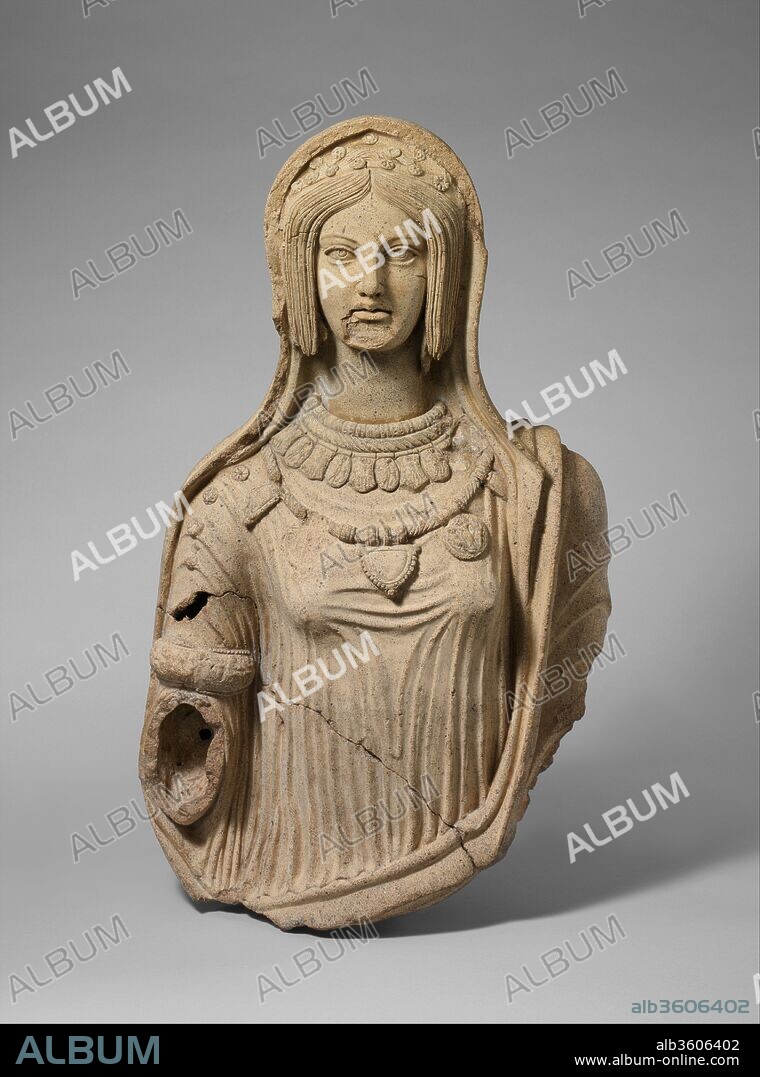alb3606402
Terracotta statue of a young woman

|
Ajouter à une autre Lightbox |
|
Ajouter à une autre Lightbox |



Avez-vous déjà un compte? S'identifier
Vous n'avez pas de compte ? S'inscrire
Acheter cette image.
Sélectionnez l'usage:

Titre:
Terracotta statue of a young woman
Légende:
Voir la traduction automatique
Terracotta statue of a young woman. Culture: Etruscan. Dimensions: H. 29 7/16 in. (74.8 cm). Date: late 4th-early 3rd century B.C..
The legendary king Aeneas, father of the Latin race, fled from Troy to Macedonia, then Sicily, and finally to the Italian peninsula. There he founded a city called Lavinium (modern Pratica di Mare), a site eighteen miles south of Rome, which became a major religious center for the Latin people. The distinctive clothing and jewelry on this life-sized statue closely resemble those on fourth and third century B.C. terracottas found there. The elaborate necklaces and armband appear to be reproduced from molds of actual jewelry. Some of the pendants are decorated with reliefs depicting various Etruscan deities and heroes. Originally, this woman wore a pair of grape-cluster earrings. The one on her left ear is visible behind her long hair. When complete, the statue probably stood in a sanctuary and showed the young woman holding an incense box in her extended right hand. This rare statue is an exceptional example of the awakening sophistication of Italic artists, who over the following two centuries fused native traditions with imported ones and gave birth to the multifaceted art of Late Republican Rome.
Technique/matériel:
TERRACOTA
Musée:
Metropolitan Museum of Art, New York, USA
Crédit:
Album / Metropolitan Museum of Art, NY
Autorisations:
Modèle: Non - Propriété: Non
Questions sur les droits?
Questions sur les droits?
Taille de l'image:
3136 x 4223 px | 37.9 MB
Taille d'impression:
26.6 x 35.8 cm | 10.5 x 14.1 in (300 dpi)
Mots clés:
 Pinterest
Pinterest Twitter
Twitter Facebook
Facebook Copier le lien
Copier le lien Email
Email
